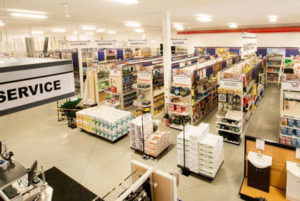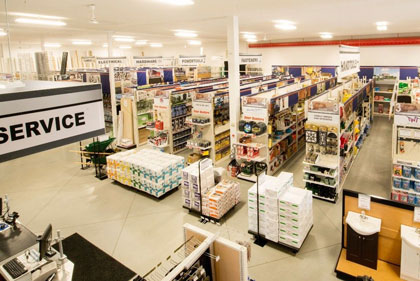More Lessons In Merchandising Matters
 We’ve helped hundreds of store owners effectively merchandise their products and increase their sales. In the course of doing so, I’ve learned some important lessons. I described six in the last issue. Here are more insider secrets to help you improve your business.
We’ve helped hundreds of store owners effectively merchandise their products and increase their sales. In the course of doing so, I’ve learned some important lessons. I described six in the last issue. Here are more insider secrets to help you improve your business.
Respect the Customer
Customers need to feel comfortable in your store. If they do they are more likely to stay longer and buy more. They need space to move. We try to avoid aisle widths less than four-feet and prefer five feet. Customers need to be able to move freely around service desks and strongly dislike dead ends and enclosed spaces.
Position Your Service Desk Wisely
Your most profitable sales are self-serve sales that don’t tie up your salespeople. You want customers to walk the store and browse. If the store is merchandised properly they will buy more than what they came for. That won’t happen if they walk straight into your sales desk. Although the desk needs to be visible for customers who need help, it should be close to the back of the store. In very small stores this may not be an option. For those retailers, the best position is often off to one side backing on to the front wall.
Get the Right Tools for the Job
There are many fixture options available today to optimally merchandise products in a building centre. Increasingly small- and mid-size stores are adopting the box store concept of using free real estate above seven feet for overhead storage. This has many advantages. It eliminates the inefficiency of back stock rooms, reduces stock outs, avoids the need to mess with the merchandising planogram to accommodate extra stock, and reduces the number of facings required for fast moving products. The result is more product selection and depth in less space.
The freed up space can then be used to bring LBM products and displays into the store. This in turn has strategic benefits as the store becomes an impactful selling vehicle for the entire business rather than a hardware store bolted on to a lumber yard. Store and back office labor costs are reduced as more customers can self serve without the need for written invoices. Historically stores that did merchandise LBM in the showroom did so as an afterthought. They would typically slap up some pallet rack end frames and beams and rely on vendors to supply a variety of display racks. The result would be an uninviting cluttered dog’s breakfast. Today there are fully integrated fixturing systems and accessories available to effectively merchandise these products.
Think Like a Customer When Merchandising a Category
What is their thought process as they walk into an aisle and decide what and if to buy? Here’s some questions you want to answer. Is this an impulse or destination category? What are the most important attributes of the category – Brand, Color, Price Point, Power, Style, Function, Material/Species, Size?
Once, you’ve answered that question, group the products by the dominant attribute. Then, within each category grouping, the products should be grouped by the next most important attribute and so on.
Make it Easy to Buy
With all the above fundamentals in place there is still the need for staff discipline to make it easy for your customers to do business with you. People can’t buy what you don’t have. Make a habit of counting and tracking holes and hold staff accountable for the results. The same holds for bin labels. Don’t make the customer ask for the price. Make sure bin labels are in place and up-to date so they can decide to buy quickly without assistance. Finally make sure product is easy to find. Use an easy find numbering system for products like lights, faucets and locks. Establish a system for where stock is stored overhead and make sure staff understand and follow it.
Drive Impulse Sales
Place silent salesmen throughout the store by cross-merchandising add-on products in highly visible places next to related products. For example, put hinges with doors, white caulking with mouldings, and carpenter glue with dowels. Use clips strips or an extra shelf or basket position. To my earlier point about project merchandising, these items should still have their own home in their “natural” department.
Other impulse sales items should be products customers will be tempted to buy but did not come to your store for. These items are normally under $20 and should be prominent in the drive aisle and near service and cash desks. Promotional ends, dump bins, bulk platforms and sidewinders all create great opportunities to drive impulse sales.
Pay Close Attention to Housekeeping
How well you and your staff maintain your store says a lot about everything you do. A well-kept store instills pride in your staff and confidence in your customers.
Roll Out the Welcome Mat
What does the customer notice when they see your business from the road? Remember, good merchandising starts in the parking lot.
Burlington Merchandising & Fixtures provides innovative merchandising solutions to both retailers and vendors with a focus on driving sales and profitability. Contact us today to get started!
You might also like:


